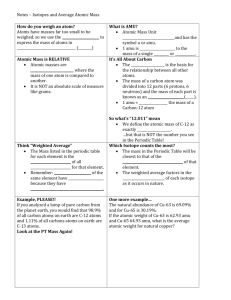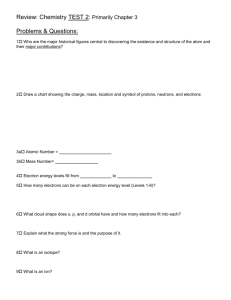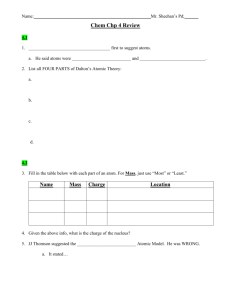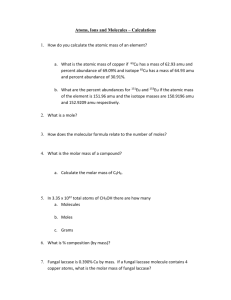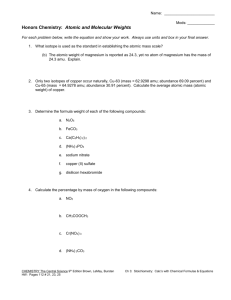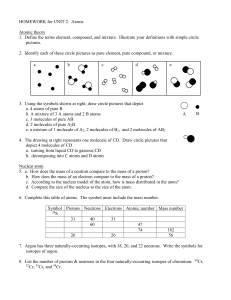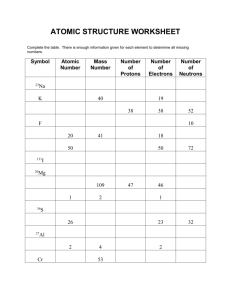Atomic Mass – Unit 3 - jsandoe
advertisement
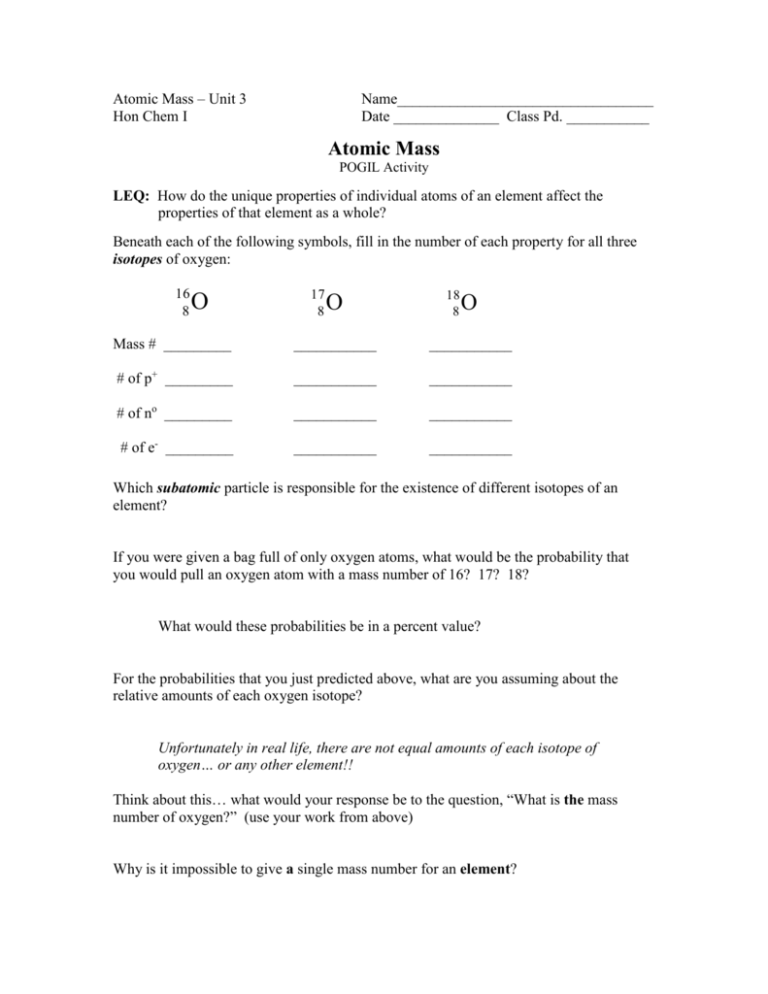
Atomic Mass – Unit 3 Hon Chem I Name__________________________________ Date ______________ Class Pd. ___________ Atomic Mass POGIL Activity LEQ: How do the unique properties of individual atoms of an element affect the properties of that element as a whole? Beneath each of the following symbols, fill in the number of each property for all three isotopes of oxygen: 16 8 O 17 8 18 8 O O Mass # _________ ___________ ___________ # of p+ _________ ___________ ___________ # of no _________ ___________ ___________ # of e- _________ ___________ ___________ Which subatomic particle is responsible for the existence of different isotopes of an element? If you were given a bag full of only oxygen atoms, what would be the probability that you would pull an oxygen atom with a mass number of 16? 17? 18? What would these probabilities be in a percent value? For the probabilities that you just predicted above, what are you assuming about the relative amounts of each oxygen isotope? Unfortunately in real life, there are not equal amounts of each isotope of oxygen… or any other element!! Think about this… what would your response be to the question, “What is the mass number of oxygen?” (use your work from above) Why is it impossible to give a single mass number for an element? What are we saying? One specific atom can have a mass number, but we can’t use that one mass number to describe ALL atoms of that element. The different atoms may have different mass numbers! How can we solve this problem?? Atomic Mass * weighted average of masses of all the atoms of a specific element. - Takes into consideration the relative amounts of each isotope - Usually measured in “amu” = atomic mass units *Atomic Mass Unit is defined as 1/12 of a carbon-12 atom. * Since there are 6 p+ and 6 no in carbon-12, each a p+ and no are considered to have an amu of 1 To solve for atomic mass: 1. Multiply the number or percent of each isotope by its mass (#) 2. Add all products together from step 1 3. Divide by total number of isotopes (or 100 if data is in percent) *Don’t need to consider sig dig’s, just report to 2 decimals Ex: 5 atoms of element “A” have a mass number of 14 amu and 13 atoms have a mass number of 16 amu. 14 amu x 5 atoms = 70 16 amu x 13 atoms = 208 18 278 278 18 = 15.44 amu Atomic Mass of element “A” Ex: Lead is found naturally in three different isotopes. The first isotope has a mass of 206 amu and makes up 23% of all lead. The isotope with mass of 207 amu makes up 24% of lead and an isotope of 208 amu of lead is found in 53% abundance. 206 amu x 23 = 207 amu x 24 = 208 amu x 53 = 100 4738 4968 11024 20730 20730 100 = 207.30 amu Practice: A majority, 91%, of neon atoms has a mass number of 20. The remaining 9% of neon has a mass number of 22. Solve for the atomic mass of neon. (20.18 amu)
